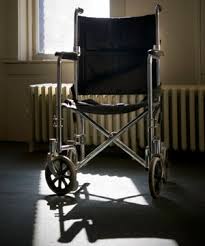Elder Abuse Incidents on the Rise
Reports of serious, physical, sexual, financial and verbal abuse are numerous among our nursing homes and in-home care providers. The rate of nursing home abuse has been steadily rising since 1996.
Elder mistreatment (i.e. abuse and neglect) is defined as intentional actions that cause harm or create a serious risk of harm to a vulnerable elder by a caregiver or other person who stands in a trust relationship to the elder. This includes failure by a caregiver to satisfy the elder’s basic needs or to protect the elder from harm.
Signs of Abuse
Common signs of elder abuse include untreated bedsores, inadequate medical care, malnutrition, dehydration, preventable accidents, and inadequate sanitation and hygiene. If you have placed a loved one in a nursing home it is important that you monitor all of these signs as well as changes in mood or behavior, signs of lethargy and changes in sleeping habits.
While some of these examples may be the common signs and symptoms of aging, it is important that you be vigilant in your observations and documentation of these signs. Too often in-home care providers and nursing home employees are not properly trained or supervised. Some of the most common forms of abuse are over medication and poor hygiene. Some abuse cases have shown that nursing homes will intentionally over medicate their patients to keep them asleep to make caring for them easier on staff and therefore requiring fewer employees per shift. This form of abuse generally will go unnoticed for some time and usually leads to issues of hygiene and sanitation.
Possible Causes of Abuse
Reductions in state and federal financial support, mostly though Medicaid and MediCal (in California) have caused many nursing homes to reduces wages and staff. Additionally, due to state and budget restrictions, inspections and enforcement of state and federal rules regarding nursing home conditions has fallen drastically.
The number of qualified and licensed vocational nurses, aides and certified nursing assistants means less qualified and under educated staff taking care of our aging loved ones. And due to the relatively low wages paid to aides and assistants ($7 to $9 per hour average) there are not enough people entering the field.
Who Are the Abusers?
Unfortunately the majority of abusers of the elderly are relatives of victim. Unqualified and undereducated care givers, whether in private in-home care or at nursing homes, are also common abusers in elder abuse cases.
Be Proactive
Elderly patients may be scared to report abuse for many reasons. In some cases they have been threatened or intimidated into remaining silent. Therefore your loved one, friend or neighbor may not immediately report to you abuse that is occurring to themselves or others. Ask questions, look around, monitor medications and attend their doctor visits if you can. Also, keep an eye on your elderly neighbors and relatives. Plus I am sure they would appreciate the visit.
There are many good care providers and nursing homes that meet and or exceed the government standards. However, if you believe there are signs of abuse the first thing you need to do is remove the person from the facility if possible. If you are not in the position to remove the victim from the facility, or keep the care provider away, contact law enforcement and report the problem.
If you believe your family member has been the victim of elder abuse give the EWING LAW GROUP a call to set up a free consultation.

Comments are closed.